
The acronym E-E-A-T represents four crucial YMYL criteria, Experience, Expertise, Authoritativeness, and Trustworthiness for search engines and Google. These principles play an essential role in the creation of high quality content for web design. Especially in areas categorized as YMYL, or Your Money or Your Life. YMYL topics typically include subjects that can significantly impact an individual’s well being, financial stability, or safety. As a result, adhering to E-E-A-T standards is imperative for anyone producing content in such sensitive fields.
Understanding E-E-A-T: Experience, Expertise, Authoritativeness, and Trustworthiness

The importance of E-E-A-T cannot be understated, as it directly affects how content is perceived by both readers and search engines. Experience refers to the personal knowledge and practical insight that a web designer brings to a topic. Therefore which can enhance the relatability and depth of the material. Expertise pertains to the specialized knowledge or skills that a writer possesses in a particular subject area. Authoritativeness encompasses the credibility of the writer or the website hosting the content. Hence reflecting whether the source is recognized as a leader in that field. Finally, trustworthiness signifies the reliability and integrity of the content. Whereas assuring readers that the information provided is accurate and responsible.
Introduction to E-E-A-T
Google and other search engines implement these E-E-A-T criteria as part of their algorithms to determine the quality of web design content and its relevance to users. Websites that exhibit strong E-E-A-T attributes are more likely to rank higher in search engine results. Thereby enhancing their visibility and user engagement. Understanding and applying E-E-A-T is therefore essential for content creators. Who aim to establish their authority while ensuring readers receive valuable, trustworthy information. This concept serves as a foundational pillar for anyone looking to succeed in the online content landscape.
Experience

True experience plays a crucial role within the framework of E-E-A-T, which stands for Experience, Expertise, Authoritativeness, and Trustworthiness. This component emphasizes the importance of content being created by individuals who possess direct. Therefore first hand knowledge of the subject matter. Unlike theoretical knowledge, experiential insight often conveys a sense of authenticity and relatability. Hence which can significantly enhance the credibility of the web design content.
In practical terms, demonstrating experience can be achieved through various methods. Such as including detailed author biographies. Whereas a web designer can outline their qualifications and personal experiences related to the topic at hand. These bios serve to establish a clear link between the content and the author’s background. Therefore providing readers with confidence that the information is grounded in real world familiarity and expertise. Furthermore, personal anecdotes or case studies can enrich the content. Thereby illustrating how theoretical concepts apply in actual contexts. Hence engaging readers more deeply.
Moreover, websites and publications that prioritize content created by experience authors. Are often perceived as more trustworthy by their audience. This trust is paramount, as it fosters a positive perception of the brand or individual providing the information. In today’s digital landscape, where misinformation can easily disseminate. Having content produced by those who have genuine experience with the subject not only enhances credibility but also plays a significant role in user engagement and retention.
Ultimately, the integration of experience into web design content creation is essential for enhancing E-E-A-T. By prioritizing the insights and narratives of authors with relevant experiences. Publishers can better meet the expectations of their audience. Providing valuable content that resonates on both intellectual and emotional levels. In this way, experience becomes not just an asset but a fundamental pillar. Whereas supporting the overall integrity and reliability of information shared.
Expertise

Demonstrating Expertise
Demonstrating expertise in content creation. Is paramount to establishing credibility and authority. Particularly in the online space where the concepts of experience. Expertise, authoritativeness, and trustworthiness. Collectively known as e-e-a-t—play a critical role. One effective way to showcase expertise is through the inclusion of web design author credentials. By providing background information about the author. Including their qualifications. Professional experience, and areas of specialization, readers can gauge the reliability of the content.
In addition to author credentials, depth of knowledge is crucial in contributing to the overall value of web design content. Authors should not only provide surface-level information but also dive deep into the subject matter. This can involve elaborating on nuanced aspects and addressing common misconceptions. Thereby enhancing the reader’s understanding and demonstrating a firm grasp of the topic. Utilizing accurate and well-researched information is essential in this process. Fact-checking data and backing claims with evidence is a responsibility of the web design creator. That adds to the credibility of the piece.
Furthermore, integrating reputable sources and studies significantly bolsters the credibility of web design content. This means citing academic research, established organizations, and peer-reviewed articles to support key points. When claims are substantiated by trustworthy resources. They not only align with the principles of e-e-a-t but also provide readers with a solid foundation. To trust the information being presented. By effectively weaving these elements into content. Writers can foster a perception of expertise that resonates with readers and enhances their experience.
Adhering to these standards enhances credibility. Therefore also improves search engine rankings, and builds trust with audiences. This guide covers the significance of experience and expertise in content creation. Hence the role of authoritativeness in establishing trust, and the implications of AI-generated web design. Therefore also maintaining high E-E-A-T standards.
Authoritativeness
Building Authoritativeness
Establishing authoritativeness within a particular niche is a multifaceted process that requires strategy. Consistency, and dedication. One of the foundational tactics for building authority. Is the regular publication of high quality web content that addresses the needs and interests of the target audience. This involves not only creating informative and engaging articles but also ensuring. Therefore that the web design content is well researched and aligns with the principles of E-E-A-T. Experience, Expertise, Authoritativeness, and Trustworthiness. By focusing on quality over quantity. Creators can position themselves as reliable sources of information. Gradually earning the trust of their readers.
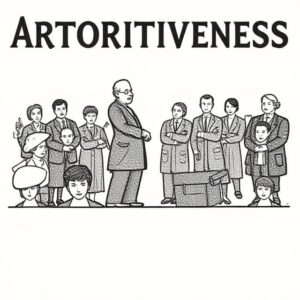
Another vital strategy for enhancing authoritativeness is to seek mentions and features from other authoritative sources within the specific field. Well respected websites, publications, or influencers reference your work or insights. This serves as an endorsement, amplifying your credibility. This can be achieved through outreach efforts. Contributing guest posts, or participating in interviews and podcasts where your expertise can be showcased. Such visibility not only bolsters your reputation but also positions you. Within a network of established voices, amplifying the overall perception of authority.
In addition to content creation and collaborations in web design. Proactively building a positive reputation in your industry is essential for establishing authoritativeness. Engaging with your audience through comments. Social media, or forums. Can help foster a community around your expertise. Actively responding to feedback and addressing concerns demonstrates your commitment to transparency and trustworthiness. Further solidifying your standing as an authority in your niche. By combining these approaches. Consistent content quality, strategic collaborations, and community engagement. You can effectively build and maintain authoritativeness. Which is crucial in this new web design landscape.
Trustworthiness

Establishing Trustworthiness
Establishing trustworthiness is a fundamental aspect of creating content that resonates with both readers and search engines. In the digital landscape, where misinformation can proliferate. Therefore transparency in authorship is essential. When content is produced by identifiable authors. Therefore it reduces ambiguity and fosters a sense of reliability. Readers are more inclined to trust web design content authored by individuals. Who clearly showcase their credentials, background, and professional experience in the relevant field. This ensures a link between the author’s expertise and the information presented. Whereas enhancing the content’s overall credibility.
Additionally, another vital component of trustworthiness is the clear communication of contact information. Therefore websites that provide accessible contact details. Hence including email addresses and phone numbers. Therefore convey an openness that invites dialog and interaction. Whereas this transparency can significantly affect how users perceive the reliability of the content. Readers are more likely to engage with content when they have a pathway to the web designers. Therefore reinforcing their trust in the material provided.
Maintaining a positive reputation is equally important in establishing trustworthiness. This can be achieved through consistent high quality web design and fast responsiveness to user feedback. Whereby negative reviews or unresolved complaints can detract from a site’s credibility. Hence impacting its perceived expertise and authoritativeness. Therefore, managing public perception through ethical practices. Such as sourcing information accurately and providing appropriate citations. Therefore is crucial. Additionally adhering to these ethical standards not only enhances trustworthiness but also aligns with E-E-A-T principles. Whereby fostering a positive reputation.
In conclusion, fostering trust through transparency in web design authorship. Also clear communication of contact information, and adherence to ethical content practices is paramount. Whereby implementing these strategies. Hence web designers can enhance their trustworthiness. Therefore ultimately benefiting both their readership and search engine visibility.
YMYL
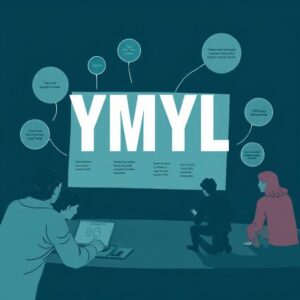
Your Money or Your Life or YMYL. Therefore refers to a specific category of website content. Hence that has the potential to impact an individual’s financial, physical, or emotional well being. Therefore this type of web design content encompasses various topics. Whereas including finance, health, safety, and legal matters. Therefore making it particularly sensitive. Due to its significant implications. Google places heightened expectations on the quality and reliability of YMYL web design content. This is where the principles of E-E-A-T, Experience, Expertise, Authoritativeness, and Trustworthiness. Come into play.
Content that falls under the YMYL category is scrutinized rigorously. Therefore to ensure it not only meets high standards but also fosters user trust. For instance, health related articles ought to be authored by professionals with relevant qualifications. Such as medical practitioners, to ensure the advice provided is accurate and safe. Similarly, financial advice should ideally be offered by certified financial planners or experts in the financial domain. Therefore the emphasis on expert authorship is crucial in establishing both experience and authority. Essential components of E-E-A-T.
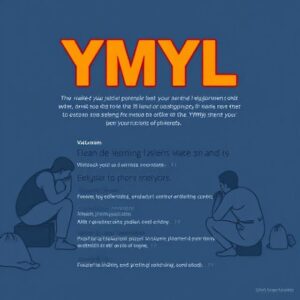
Understanding YMYL Content
Moreover, YMYL content must be consistently updated to reflect the latest developments and research in its pertaining field. This continual refinement not only boosts its credibility but also reinforces. Therefore a framework of trustworthiness that is vital for attracting users. As people seek reliable information. Especially when discussing matters that can influence their well being. Whereas web designers are tasked with delivering accurate and impactful insights. Therefore that align with Google’s stringent expectations.
In conclusion, understanding YMYL content within the context of E-E-A-T. Thereby ensuring that this content adheres to high standards of accuracy and reliability. Therefore they contribute to a safer digital environment for users seeking information that affects their lives directly. For the best info on this subject. Read our Web Design Okc Blog.

Google’s Quality Rater Guidelines serve as a crucial framework for assessing the quality of web design content found through search engine results. Particularly in regard to E-E-A-T: Experience, Expertise, Authoritativeness, and Trustworthiness. Google raters are trained to evaluate how these four dimensions interact. Therefore to determine the likelihood of content delivering reliable. Valuable information to users.
Google’s Quality Rater Guidelines: E-E-A-T Evaluation
Chapter 4.5.2 outlines the varying levels of E-E-A-T, providing criteria for distinguishing between high and low-quality pages. High E-E-A-T content typically comes from recognized experts in web design or reputable organizations. Therefore ensuring that users receive credible health, financial, or legal advice.

In Chapter 5.1, guidelines point about low quality content. Lack of expert input, excessive advertisement presence, or misleading information. This chapter emphasizes the importance of content creator credentials. Whereas low E-E-A-T pieces tend to undermine user trust. Leading to dissatisfaction and potential harm. Thus, identifying and flagging such content is crucial for raters to maintain the integrity of Google results.
Chapter 7.3 presents high-level criteria such as user intent and relevance. Further clarifying how to weigh the experience and expertise of content creators. Google raters assess if the content addresses users’ questions effectively and demonstrates the necessary knowledge and skills. This component of the guidelines underscores the importance. Of understanding user context and expectations to improve the overall quality of web design content.- Ultimately enhancing the user experience on the Google platform.
Finally, Chapter 8.3 outlines the attributes of the highest levels of E-E-A-T. Content that successfully meets these rigorous criteria is often created by specialists or organizations recognized in their field. Such content showcases not only a thorough understanding. Of the subject matter, but also a commitment to providing transparency.
Search Engines

The rise of artificial intelligence (AI) in search engines content creation has significantly reshaped the landscape of digital media. Particularly concerning the principles of Experience, Expertise, Authoritativeness, and Trustworthiness, collectively known as E-E-A-T. One challenge with AI-generated web design is its ability to convey user experience. A crucial element of E-E-A-T. Unlike human authors who can share personal insights and lived experiences. AI lacks the capability to authenticate experiences. Which can lead to skepticism regarding the quality of AI-produced material.
Google has voiced its concerns over the proliferation of AI-generated content. Emphasizing the importance of quality and relevance. The search engines underscores that while AI can generate text-based outputs quickly. The absence of human nuance may weaken the depth of understanding necessary for high-quality web design. This presents a dilemma for website owners and content marketers. Who must navigate the fine line between leveraging AI tools for efficiency and retaining the human touch. That instills credibility and trust.
Furthermore, search engines advocates for a robust review process wherein human editors evaluate AI-generated content. To ensure it aligns with E-E-A-T standards. This requirement underlines the necessity for human oversight in maintaining the integrity of information. As it ensures that the content not only meets the factual criteria but is also reflective. Therefore of genuine user experience and expertise. Thus, while AI can assist in creating web design content at scale. With routine human intervention to bolster trustfulness and authority.
In an era where AI continues to evolve. Understanding the implications of its use relative to E-E-A-T is critical. As content creators embrace AI technologies. They should remain vigilant about the quality and reliability of what is produced. Ensuring that any information disseminated adheres to the high standards that search engines audiences have come to expect.
E-E-A-T in Content Creation

As we delve into the future of E-E-A-T web design. It becomes increasingly apparent that integrating the principles of Experience, Expertise, Authoritativeness, and Trustworthiness (E-E-A-T). Therefore will be essential for achieving successful online engagement and enhanced search rankings. Whereby the digital landscape is continuously evolving. Whereas search engines and users alike place greater emphasis on high quality, reliable content. As such, businesses and web designers must prioritize these principles. Therefore to align with the expectations of their audiences and the ever changing algorithms of search engines.
Moving forward, the importance of E-E-A-T content creation cannot be overstated. Web design content that showcases the creator’s experience and expertise. Therefore not only establishes credibility but also cultivates trust among readers. This is particularly vital in a world where misinformation can spread rapidly. Whereby focusing on these criteria, content creators can differentiate themselves in a crowded marketplace. Thus improving their authority. Moreover, integrating E-E-A-T effectively implies a lasting commitment to quality. Which in turn fosters long term relationships with the audience.
The rise of artificial intelligence tools is also shaping the future of E-E-A-T content creation. While these technologies can assist in generating web design content and providing data driven insights. They cannot replace the authentic experiences and nuanced expertise that human authors bring to the table. Hence, web design that combines AI’s capabilities with genuine human knowledge. Therefore will likely thrive. Embracing E-E-A-T principles in this context. Could facilitate a balanced approach that utilizes technology without compromising quality or trust.
In conclusion, prioritizing E-E-A-T content creation principles will be instrumental for content creators aiming to navigate the future landscape of digital content. By remaining steadfast in their commitment to delivering content. That resonates with experience, expertise, authoritativeness, and trustworthiness. They can secure their place in an increasingly competitive environment.
Principles of E-E-A-T

Explore the critical principles of E-E-A-T (Experience, Expertise, Authoritativeness, Trustworthiness) and their impact on content quality, especially in YMYL (Your Money or Your Life) topics.
🔍 Explore the Critical Principles of E-E-A-T
In today’s digital landscape of web design, Google’s E-E-A-T framework plays a vital role in determining content quality and search ranking. Let’s break down its four pillars and why they matter:
1. Experience
Does the content show first-hand knowledge? Real-world experience — such as using a product, visiting a place, or practicing a skill. Adds authenticity and credibility to your content.
Example: A travel blog about Japan written by someone who actually visited Tokyo will carry more weight than one based on second-hand research.
2. Expertise
Is the author a subject-matter expert? Technical, medical, or financial content should be written by individuals with formal training or verified experience.
Tip: Include author bios in the web design with credentials to establish expertise.
3. Authoritativeness
Is your site or content recognized as a go-to source? Authority is built through backlinks, mentions, citations, and a strong reputation in your niche.
Think of it as your digital street cred.
4. Trustworthiness
Can users trust your site? Secure connections (HTTPS), clear sourcing, privacy policies, and transparent editorial practices build user trust.
Why E-E-A-T Matters
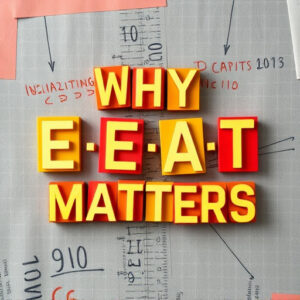
Trust is the glue that holds the rest of E-E-A-T together.
📈 Why E-E-A-T Matters
Whether your web design is a health blog, e-commerce site, or tech platform, demonstrating E-E-A-T boosts your chances of ranking well on Google and building lasting user loyalty.
🔗 Quality content isn’t just written — it’s proven.
Why E-E-A-T Matters: The Key to Building Trust and Authority Online
In today’s digital landscape, where information is constantly being shared. Consumed, and scrutinized, the concepts of E-E-A-T (Experience, Expertise, Authoritativeness, and Trustworthiness). Have become foundational to online content strategies, particularly for SEO (Search Engine Optimization). While many are familiar with the standard E-A-T (Expertise, Authoritativeness, and Trustworthiness) guidelines, the addition of Experience makes E-E-A-T a game changer. But why exactly does E-E-A-T matter, and how does it influence both search engine rankings and user perception?
What is E-E-A-T?
Let’s break it down:
-
Experience: This new element in E-E-A-T refers to the first-hand experience or real-world knowledge that web designers bring to a subject. It’s all about demonstrating that the author has personal experience. Practical knowledge, or direct interaction with the topic they are writing about.
-
Expertise: This relates to the level of knowledge or skill the author or website demonstrates in a particular field or subject. It’s about showing that the web design content is credible and qualified in the specific domain.
-
Authoritativeness: This emphasizes the overall reputation and influence of the website or content creator within their industry or niche. An authoritative source is one that’s widely recognized by peers, industry leaders, or authoritative figures.
-
Trustworthiness: This is the foundation of everything in E-E-A-T. Trustworthiness refers to how reliable and honest the content is. Ensuring users can depend on the information provided.
E-E-A-T for SEO
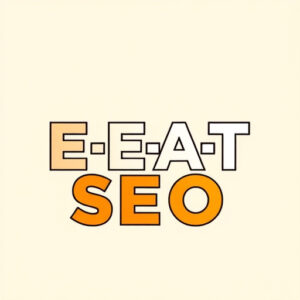
E-E-A-T for SEO Search engines, especially Google, have evolved to prioritize web design content that not only answers a user’s query but does so in a reliable. Expert-driven, and trustworthy way. Content that reflects E-E-A-T for SEO principles is more likely to rank higher because it aligns with the search engines’ goals of delivering valuable. Accurate, and trustworthy information to users.
Improved Rankings: Google’s algorithm uses E-E-A-T as one of the main factors to evaluate the quality of web design. High E-E-A-T for SEO content tends to rank better in search results. Whereas search engines aim to connect users with the most authoritative and trustworthy sources of information.
Reduced Misinformation: With the growing threat of misinformation online, search engines are prioritizing content that reflects a credible and responsible voice. Web design content that demonstrates the right level of expertise and trustworthiness. Is more likely to be deemed credible and useful to readers.
Better User Engagement: When users trust the content. Therefore they are more likely to engage with it. Whether it’s reading through the article, sharing it with others, or commenting. Trust and authority can lead to higher engagement metrics, which can, in turn, improve SEO performance.
How to Build E-E-A-T for SEO
Demonstrate Personal Experience: Share your personal stories, case studies, or hands-on examples where relevant. Therefore showing that you have practical experience with the subject matter makes your web design content more relatable and authentic.Cite Authoritative Sources: Build authority by referencing reputable sources and providing data-backed content. Ensure that your website itself is viewed as an authoritative source. Therefore within your niche by gaining backlinks from other trustworthy sites.
